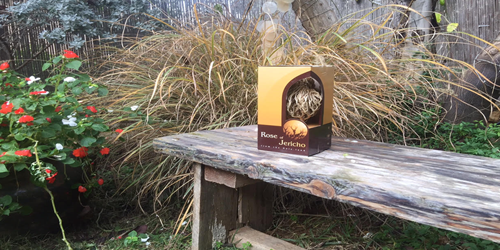ROSE OF JERICHO
The ultimate guide to the real Rose of Jericho
The Jericho lily, or Anastatica hierochontica, is a Middle Eastern plant from the ancient Jericho area near the Dead Sea in Israel and has long been revered for its ability to “revive” itself from a dormant state, making it a symbol of hope and renewal.
In this ultimate guide to the true Jericho rose, we’ll describe the history and significance of this plant, as well as its unique characteristics and care requirements.
History and meaning
The Jericho rose has a long and deep history, dating back to ancient times. It was revered by the ancient Egyptians, who believed the plant had mystical powers and could bring about rebirth and renewal. In fact, the plant was often used in ancient Egyptian burial ceremonies, where it was placed in tombs to symbolize the idea of resurrection.
The plant’s significance has continued throughout history, with the Jericho rose mentioned in the Bible and other religious texts. In Christian tradition, the plant is said to have been present at the birth of Christ, with the Magi using it as a symbol of his resurrection.
Properties
Jericho rose is a small plant that grows in dry desert areas. It has a unique adaptation that allows it to survive in harsh conditions by entering a dormant state when water is scarce. When the plant is without water, it curls up into a tight ball and appears dead. However, when water is added, the plant “resurrects” and spreads its leaves and branches to absorb the water.
The leaves of the plant are small and gray-green in color, and it produces small white or yellow flowers that bloom in the summer months. It is an annual plant, meaning it completes its entire life cycle within one year.
Treatment requirements
Jericho rose is a low maintenance plant that requires little attention. Because the plant being sold is a dead plant, there is no need for special treatment. The plant will open when we expose it to water and close when we dry it, it must not be left in water for a long time because it will rot.
When the plant has completely dried it will enter its dormant state. When watering the plant, soak it in water for 30 minutes to an hour, until it has absorbed enough water to revive itself, then open its branches.
uses
The Jericho rose has a wide variety of uses, both decorative and spiritual. In home design, the plant is often used in dried flower arrangements and terrariums, where it can add a unique and interesting texture to the display.
Spiritually, the plant is often used in ceremonies and rituals to symbolize renewal and rebirth. It is said that it also has healing properties and is used in traditional medicine to treat a variety of diseases.
Jericho rose is a fascinating and unique plant that has attracted people for centuries. Its ability to “revive” itself from a dormant state made it a symbol of hope and renewal, and it played an important role in religious and spiritual traditions around the world.



